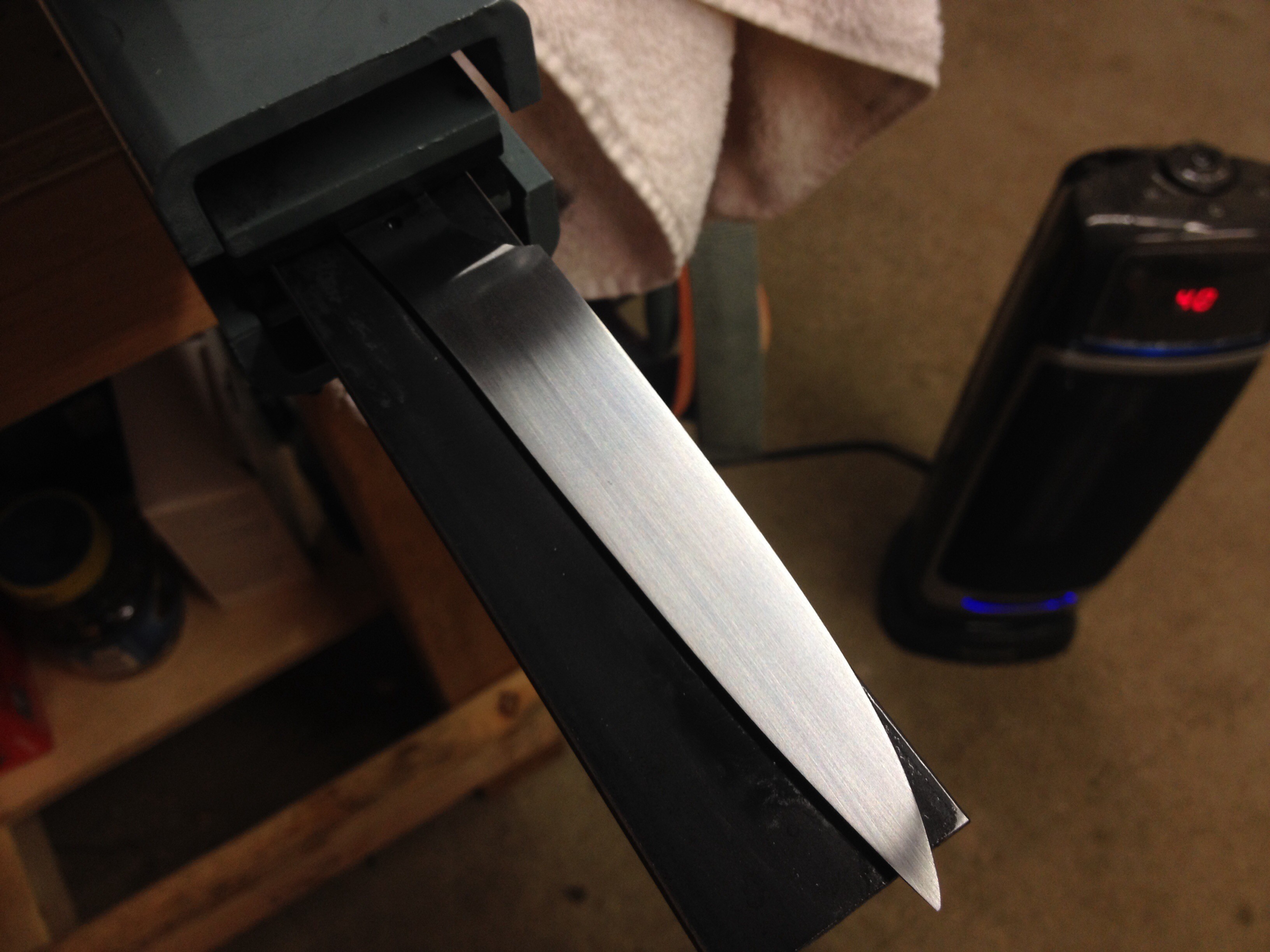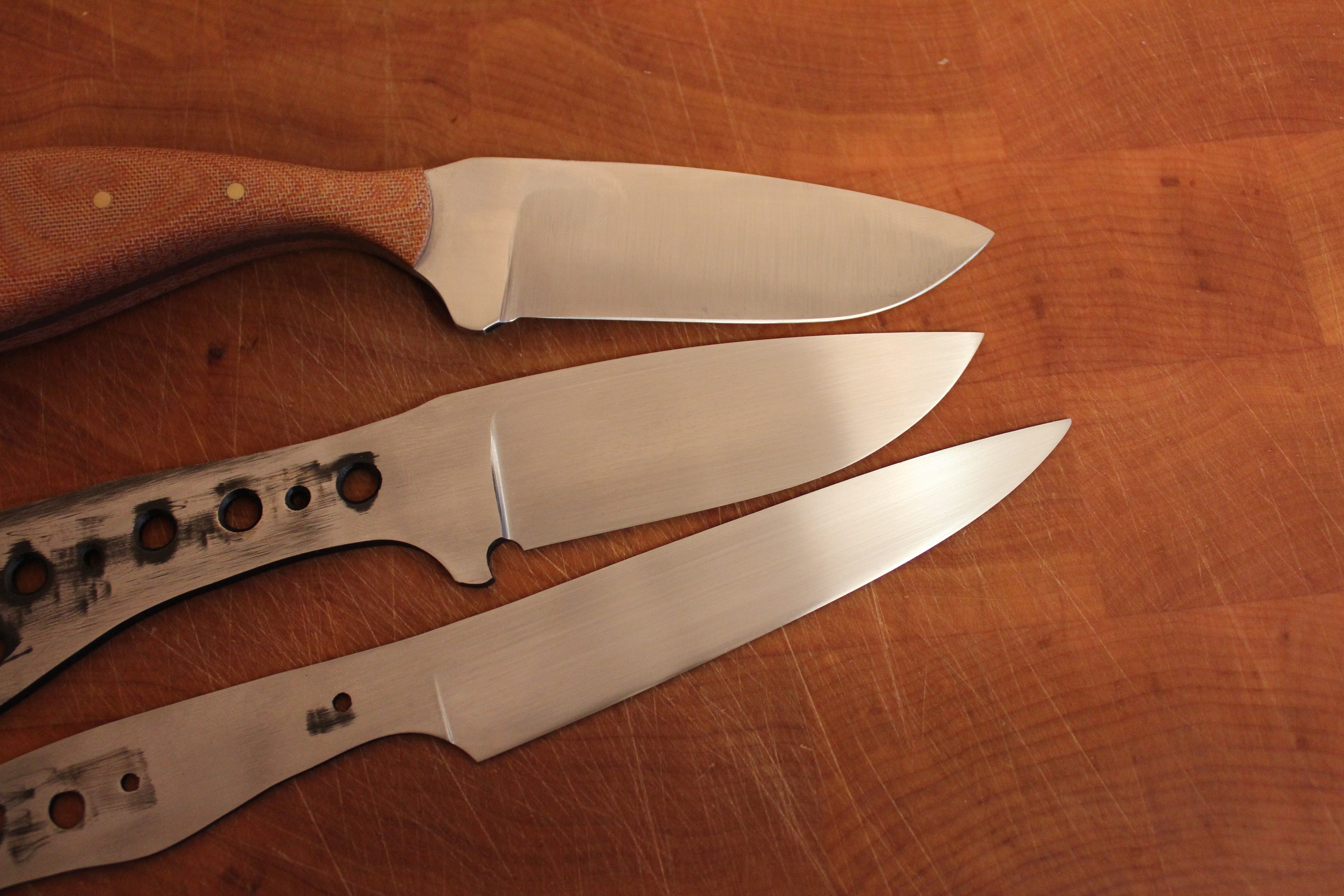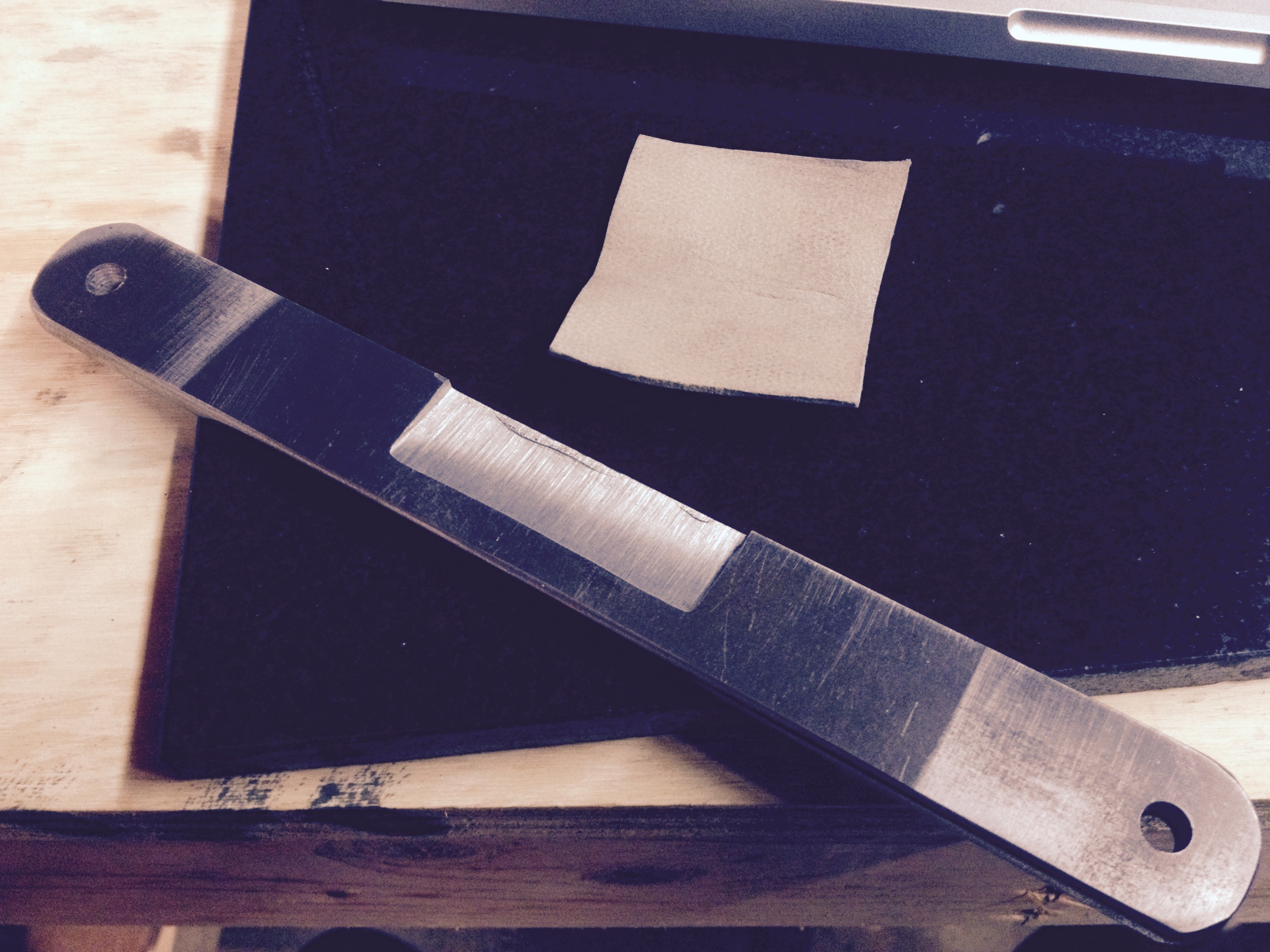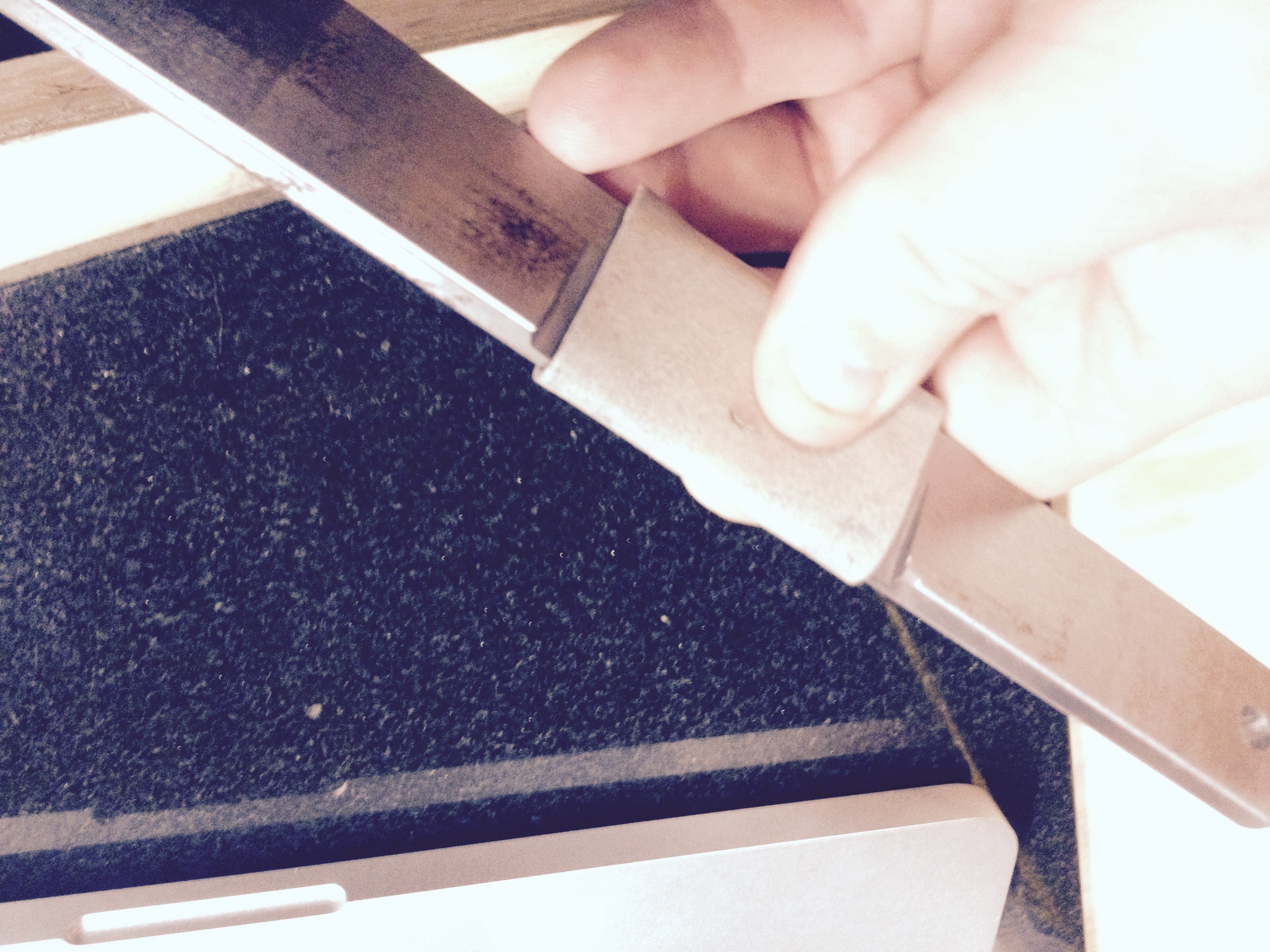stereo.pete
Senior Member
- Joined
- Mar 2, 2011
- Messages
- 2,398
- Reaction score
- 366
After watching Nick Wheeler's hand sanding 101 video a few times and forcing myself to be patient and slow down, I've been able to get a nifty finish on my knives.




Looks great. What is your finish grit?

Do you think a vibrating hand sander would give an acceptable finish for a daily driver?
That looks great. I have to say, I have been trying to hand polish a lot of knives lately, and I have a lot of questions myself. I started at 220 and went up to 2k, but I still have spots I am unhappy with. I am also dealing with how to get a consistent scratch pattern. Lately I have been using a rock hard felt wrapper in sand paper to give more consistent application. With that said, I have several knives now with inconsistent scratch patterns that need to be fixed -- depending upon my motivation.
k.


How long would you estimate that it takes you to hand sand a hunter sized blade to 800?
nope, unless you want circle patterns that is?
Looks great Pete:thumbsup:
dry sanding i guess?
Looks good Pete!
On a related note, I have a mirror polished Honyaki, and I'm not a huge fan of how the finish feels. If I want to take it back to a satin finish can I just go straight to 800 grit, or will I need to start lower 320ish and work back up.
The hunter and the petty each took around 3 hours total starting at a 220 grit belt finish, then 320, 500 and finally 800 grit sand paper.
I have found that using a 40 durometer rubber contact wheel on your grinder and also a variety of edm stones gets hand sanding time reduced by about 85 percent.
I have that vise shown in the pic---it really helps. Holds blades with or without handles, and flips from one side to the other in a few seconds.
This is what I use
I made a sanding stick out of 1/4" O1 stock that I realized would never make a good knife. I hollow ground a channel in the center, which helps me hold the sand paper and ground in a radius on all edges. I will be making another one out of either micarta or wood sometime in the future to make a more light weight tool. I use this tool just the way it is with quality sand paper and work the flats. Each grit I sand in a different direction in order to ensure that I've removed the old scratches from the previous grit.

When I go to finish sand since my grinding skills are rather terrible, I use a small piece of spongey kitchen shelf liner, which helps blend everything together and creates a slight convex.

Lastly, if you have spots that you are not happy with, then that means you either drop down a grit and make sure to remove them or stick with what you have and keep sanding until they go away. What I finally realized is that hand sanding is a very time consuming process and it takes patience and dedication. Also, you need to be looking at the finish in different lights to ensure no scratches remain.
I use WD-40 in combination with Rhynowhet by Redline sand paper.
SOLD! I would love to hear more, please elaborate sir! In terms of the contact wheel, I do my grinding on a flat platen so I'm not sure that would help. What EDM stones are you referencing?
Thanks,
Pete
Enter your email address to join: